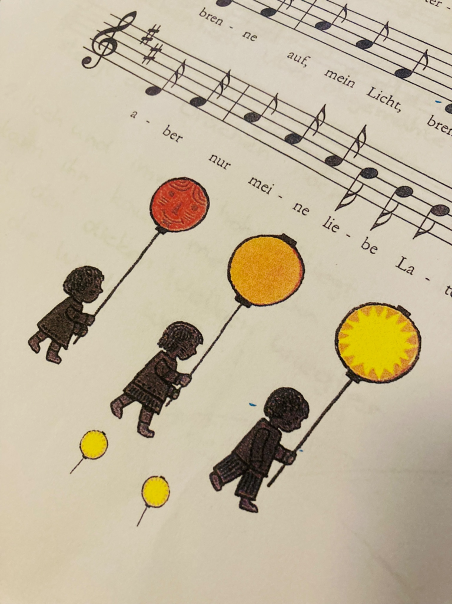austria’s laternenfest
(Artist unknown)
On the evening of November 11, a very special festival happens in Austria. Celebrating the feast of St. Martin, young children gather to process in the streets, singing traditional songs and holding paper lanterns, handmade and aglow with candlelight. The creation of a lantern becomes part of the typical craft activities during this season, and on many occasions children are also entrusted with a small candle to place within it. Small groups from individual neighborhoods, schools or communities sing and walk in the twilight moments, spreading light in the impending dark evenings.
Music plays a large part in the evening’s ritual, and songs such as “Laterne, Laterne”, : https://www.youtube.com/watch?v=TCPTwaUX6Sg
“Durch die Straßen” : https://www.youtube.com/watch?v=ifnqKFYePtI
and “Ich geh mit Meiner Laterne” https://www.youtube.com/watch?v=0aY531yu3K8
echo in city streets and country laneways as the children and their families traverse the landscape.
In the Middle Ages St. Martin’s Day was an important festival in many parts of Europe, particularly in German-speaking regions, where it marked the end of the harvest season and beginning of winter. Martinigansl (roasted goose) is the traditional dish of the season and is served in many Austrian restaurants during late October and early November, as well as during family dinners.
(Artist unknown)
Martin of Tours (died 397) was a Roman soldier who was baptized as an adult and later became a bishop. He is best known for the tale whereby he cut his cloak in half with his sword, to give half to a beggar who was dressed in only rags in the deep cold of winter. Themes of kindness, community and light recur throughout the world during the season of winter; sometimes the Laternenfest walk is led by a rider on a white horse, emulating St. Martin and his red cloak. In some places the procession ends with a Martinsfeuer (St. Martin bonfire).
(Artist unknown)



